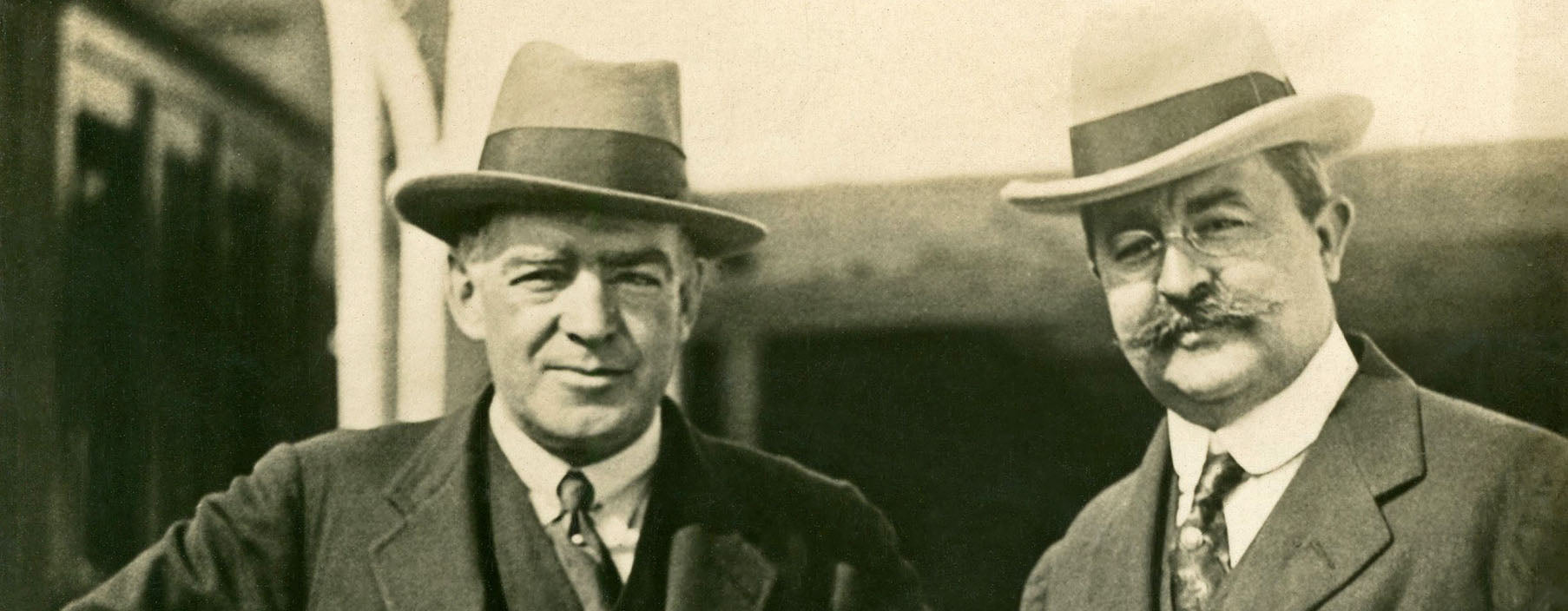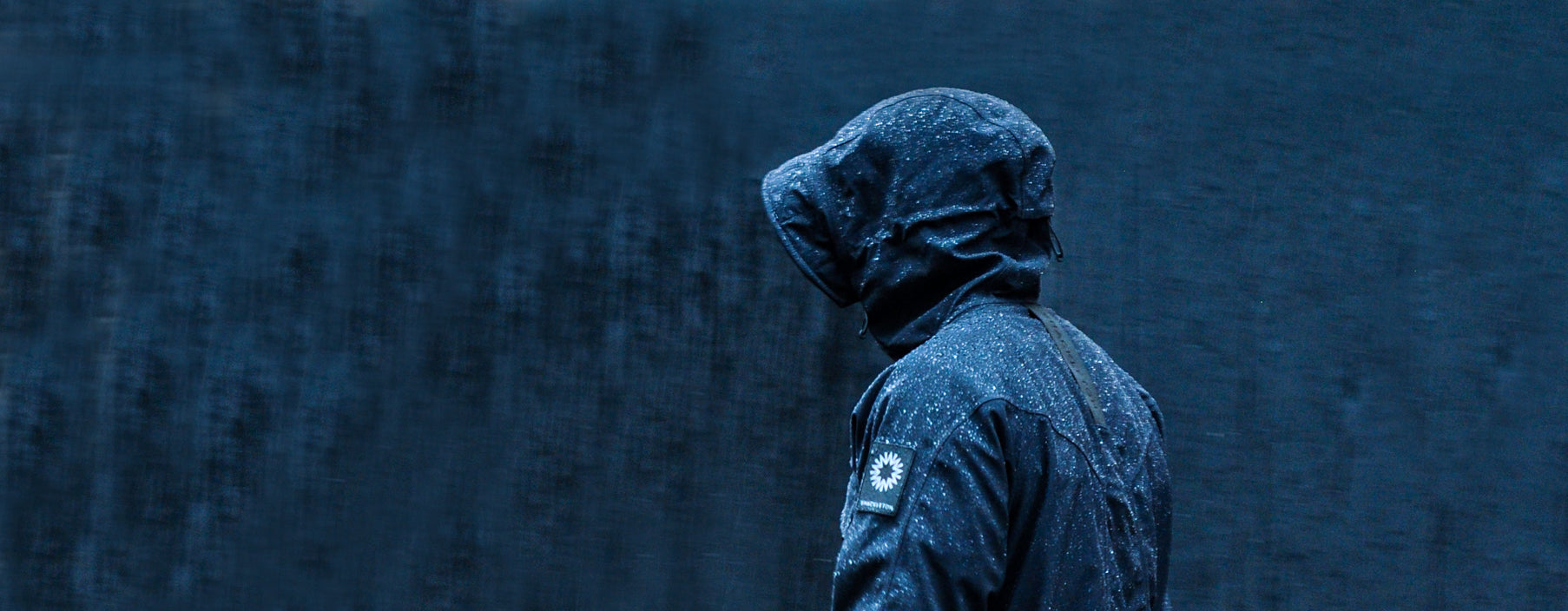
The man who made Shackleton’s last voyage possible
Dr Jan Chojecki is the grandson of John Quiller Rowett, who financed the Shackleton-Rowett (Quest) Expedition of 1921-22. He has a degree and PhD in Natural Sciences from the University of Cambridge and has spent his career working in public sector technology transfer. He is also a member of the ReQuest2021 steering committee, which oversaw the Scouts’ expedition to the Antarctic in memory of Shackleton on the centenary of his death. In this interview with Rachel Halliburton he talks about the journey he has been on to re-examine the role his grandfather played in one of history’s most famous and tragic expeditions.
A bank account can often reveal as much about an individual as their most intimate diaries. In 1921 John Quiller Rowett’s purchases made for particularly gripping reading. One list included a ‘Triple magnum of Heidisieck and 25,000 cigarettes for the crew. Also 1,440 tins of herrings, 192 tins pineapple, 10,000 quarts of dried milk (Trufood’s Tumilk), 1,200lbs of cheese, about 3 tons of flour, 2 or 3 tons of biscuits, 2 tons sugar, 5 tons rice’.
‘There was even an electrically heated crow’s nest’
Earlier in the year the list had been more esoteric. It included an Ediswan Pointalite outfit [a light for projection], a Sperry gyrocompass, two Marconi wirelesses, the latest photographic and kinematography equipment, a darkroom, the Avro Baby seaplane and even an electrically heated crow’s nest. Some of these had been lent by the Admiralty and Air Ministry. Yet Rowett’s agreement to provide insurance had proved crucial to their being allowed to be taken on what would prove to be Ernest Shackleton’s final expedition to the Antarctic.
 The Savoy Menu signed by Shackleton, Rowett et al confirming the expedition will go to the Antarctic and not the Arctic
The Savoy Menu signed by Shackleton, Rowett et al confirming the expedition will go to the Antarctic and not the Arctic
In a photograph of John Quiller Rowett with Ernest Shackleton and Frank Wild on the Quest on July 21, 1921, we see a pensive man with round glasses and a neat moustache, seemingly preoccupied by the challenges that lie ahead. Though he ended up financing the lion’s share of the expedition, he would prove to be much more than the moneyman to Shackleton’s adventurer. Just a cursory glance at what he did shows him taking on the role of friend, counsellor, advocate, diplomat and host extraordinaire to anyone connected to Shackleton and his expedition. It was Rowett who broke the news of Shackleton’s death to his widow Emily, Rowett who negotiated along with Emily for Hugh Robert Mill to write the explorer’s first biography and Rowett who fought to make sure that the scientific research done on the Quest would be preserved for posterity.

John Quiller Rowett, flanked by Sir Ernest Shackleton and Cmdr Frank Wild on the Quest, at Southampton, August 1921.
Yet as with Shackleton, this expedition would prove to be his tragedy, even if it took longer for the final act to play out. In The Quest Chronicle, a book packed with fascinating detail and photographs, Rowett’s grandson Jan Chojecki has unearthed a wealth of material to tell the story of a man who staked both his fortune (made in the drinks industry) and his happiness on being a part of history.
‘I think in a strange way the interesting story about the Quest expedition begins at the end of Shackleton’s life,’ he tells me when we meet on a cold, sunny morning in a café next to the Grand Union Canal. ‘It’s like one of those Shakespearean plays where the king dies in the first act. Once Shackleton was gone there was a vacuum of leadership. Wild had a lot of great qualities, but fundamentally he was his right-hand man. He was traumatised by Shackleton’s death and he wasn’t easy with leading. It was a very difficult time.’
‘I think in a strange way the interesting story about the Quest expedition begins at the end of Shackleton’s life’
Difficult is an understatement. Both on the ship itself and back in England the divisions between the different players quickly became apparent. On the same day – May 6, 1922 – that Shackleton’s comrades gathered at his graveside in Grytviken, The Times announced that the Shackleton-Rowett partnership had gone into receivership. Emily Shackleton wasn’t happy for Rowett to sort out the affairs of the expedition, so he had no choice but to take legal action against her. He was doing this, he firmly believed, in the best interests of everyone involved – while most of the crew understood this, it set the tone for the increasingly fractious relationship between the two of them.
 Shackleton's crew gathered at his memorial cairn.
Shackleton's crew gathered at his memorial cairn.
One of the questions that inevitably emerges when you read the book is to what degree did Shackleton himself contribute to the expedition’s problems? Famously his initial intention was to go to the Arctic, and it was with this in mind that he acquired the steam-powered Norwegian sealer – Foca-1, renamed The Quest by Emily. ‘It was right for the Arctic, but not the Antarctic with the challenges of its open oceans,’ says Chojecki. The engine was clearly underpowered from the start and frequent stops had to be made to mend it. After leaving England on September 24, the Quest had to stop at Lisbon on October 4 for a week before setting out again. ‘No wonder my grandfather was worried,’ he comments. ‘I think he should have worried even more than he did.
The loss of time through ship repairs meant that the route frequently had to be adjusted. One of the most significant changes was that the Quest – instead of heading to Cape Town via the Atlantic Islands – had to go to Rio de Janeiro for another patch-up job. This meant that they could not pick up a lot of specialist polar equipment, nor the sea plane. Most damaging of all they could not pick up the Australian scientist Ernest J Goddard. This meant that Hubert Wilkins – whose diary Chojecki quotes extensively – became the main scientist for the expedition, despite the fact that he was trained as an electrical engineer and meteorologist.
Wilkins was working at a time when naturalists had to kill the animals they were studying as well as photographing them.
‘The Wilkins diary was pretty key to my book,’ Chojecki – himself a natural scientist – tells me. ‘Most of it is handwritten and often fairly illegible, partly because of his handwriting style, partly because he was writing on a ship.’ Happily for Chojecki, a man called Philp van Dueren of the Wilkins Foundation has devoted himself to deciphering the diaries and letters. This meant that Chojecki was able to include extensive quotes from material that hasn’t been published before.
One striking detail is that Wilkins was working at a time when naturalists had to kill the animals they were studying as well as photographing them. In one letter Wilkins writes to his mother that he has ‘skinned and prepared 54 birds for the [Natural History] museum.’ The specimens Wilkins sent back are still preserved at Tring. This means – as Chojecki points out – that there’s a potentially very interesting project open for anyone who now wants to go through the specimens and cross-reference them with his letters and diaries.
One of the female guests wore a white bodice, an ‘iceberg hat’, and white trousers with the names of the crew of the Quest on them
It’s just one of many fascinating avenues of research in this story of thwarted ambitions and tangled lives. Another is the interesting strand about the strong (but completely above board) friendship that John’s wife, Ellie Rowett, developed with Alexander Macklin, the Quest’s physician, when they were working with Frank Wild on the writing of Shackleton’s Last Voyage. Then there are eye-goggling details like the Rowetts’ trip to the Chelsea Arts Club Ball on Feb 7, 1923. One of the female guests – who accompanied James Marr, the boy scout who had won a place on the Quest – wore a white bodice, an ‘iceberg hat’, and white trousers which, as Ellie wrote disapprovingly, had ‘the names of all the men of the Quest and Shackleton and Scott’ written on them in ink.

A portrait of the 'Rowett party' prior to the Chelsea Club Arts Ball on Feb 7 1923. John Rowett is the figure in the centre, back row. Dr Leonard Hussey is front row far left, Frank Wild is - dressed as a penguin! - front row far right.
Yet the most poignant story of them all belongs to Rowett. In 1924, following the stresses and strains of the Quest expedition, one of Rowett’s business partners in the drinks industry committed suicide. This meant Rowett lost essentially all of his considerable fortune. He had to sell off his London property on Hyde Park Terrace and his Sussex estate, Ely Place.
In the epilogue, Chojecki writes, ‘On Wednesday, 1 October 1924, John Quiller Rowett, aged 48, was found dead in curious circumstances at his London home on Hyde Park Terrace. He was found in the billiard room, feet on the floor, slumped against the side of the window, with a thin window-sash cord around his neck, but not tied with a knot…The coroner returned a verdict of “suicide by hanging while of unsound mind”.’
He has left this detail till the end, he tells me, because he does not want his grandfather’s story to be defined by his suicide. ‘He was a man who cared for other people,’ he says. ‘He would have been a heck of a philanthropist if he had kept his money.’ Shortly before we meet, Chojecki has been to visit one of Rowett’s more successful endeavours, the Rowett Institute of Animal Nutrition in Aberdeen ‘now one of the leading centres on animal and human nutrition in the world’.
Chojecki is not a professional writer; but what he’s pulled together in The Quest Chronicle is simultaneously a labour of love and a scientifically rigorous account of the last true expedition of the Heroic Age of Antarctic Exploration. It throws into stark relief not just how essential his grandfather’s contribution was to Shackleton being able to travel to the Antarctic, but also how central he was to establishing his legacy. Chojecki tells me that going through the correspondence his grandmother received after his grandfather died was ‘quite painful but also quite insightful – I know people are normally kind during bereavement, but letter after letter shows that he was a genuinely well-liked person who was respected in the City.’ It’s no small part of his achievement that in this book Rowett is allowed to stand tall again; as essential a part of Shackleton’s history as any man who went with him to brave the physical challenges of the Antarctic.
The Quest Chronicle: The Story of the Shackleton-Rowett Expedition can be bought here.



